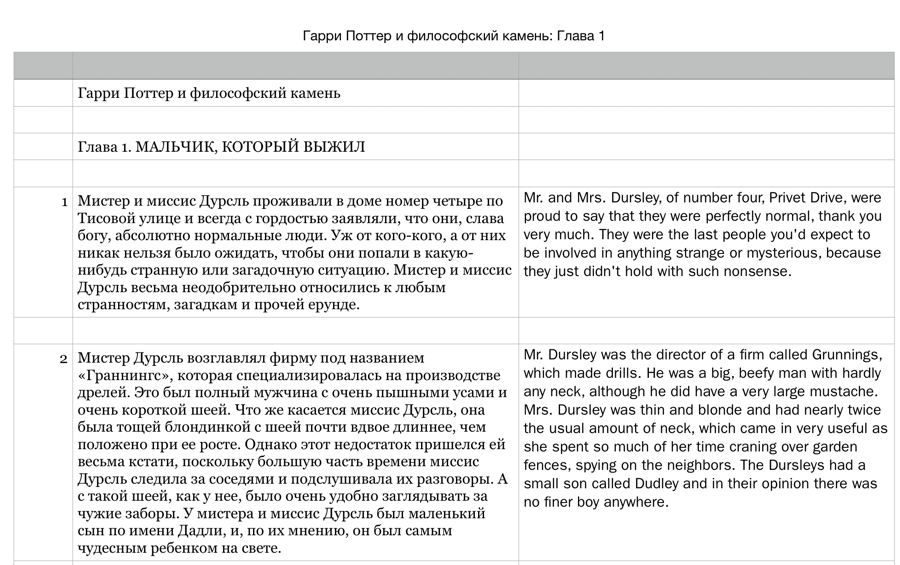Russian
Normalizing spelling in Russian words containing the letter ё
The Russian letters ё and e have a complex and troubled relationship. The two letters are pronounced differently, but usually appear the same in written text. This presents complications for Russian learners and for text-to-speech systems. In several recent projects, I have needed to normalize the spelling of Russian words. For examples, if I have the written word определенно , is the word actually определенно ? Or is it определённо ?
This was a larger challenge than I imagined. Apart from udar1, I failed to find any off-the-shelf solutions to what I call normalizing the spelling of words that should be spelled with ё . It turns out that the Russian language Wiktionary respects URLs whether spelled with ё or e . Therefore, one way of normalizing the spelling is to query Wiktionary and grab the headword from the page. Normally I don’t like creating this sort of dependency; but it’s the only solution that presented itself so far. Here’s the approach I took:
Свидетельство того или тому?
I was puzzled by this sentence on the BBC Russian Service:
Нет свидетельств тому, что на нынешних выборах дело обстоит иначе.
It means “There is no evidence that in the current election things are any different.” but the puzzle isn’t the meaning, it’s the grammatical case in which the author has placed the demonstrative pronoun то , which is dative here тому . The thing is that you see examples where either the genitive or the dative follows свидетельство . So what’s the difference?
Typing Russian stress marks on macOS
While Russian text intended for native speakers doesn’t show accented vowel characters to point out the syllabic stress (ударение) , many texts intended for learners often do have these marks. But how to apply these marks when typing?
Typically, for Latin keyboards on macOS, you can hold down the key (like long-press on iOS) and a popup dialog will show you options for that character. But in the standard Russian phonetic keyboard it doesn’t work. Hold down the e key and you’ll get the option for the letter ë (yes, it’s regarded as a separate letter in Russian - the essential but misbegotten ë .)
Semelfactive Verbs

L-R method for language learning
I’ve recently discovered the L-R system of language learning and have been setting up to learn it.
The idea is that you begin with long texts - novels, for example - in your target language (L2) and follow a systematic approach to reading and listening.
L-R system in a nutshell
Here are the steps:
- Read the text in L1 (your native language) and become familiar with it.^[I rephrased this intruction from other sources that say “read the translation” because what if the text itself if a translation? For example, my first text to try this with is Гарри Поттер и философский камень which was originally written in English and then translated into Russian, among other languages. So, it’s best to say for the first step “Read the text in your L1 and become very very familiar with what it says.”]
- Listen to the recording and simultaneously read the text in L2.
- Listen to the recording while reading the text in L1.
- Repeat after the speaker. But only do this once you truly understand the meaning of what you’re repeating. The goal is meaning, not only pronunciation.
- Translate the text from L1 to L2 by covereing up one side while reading the other.
Tips
It is hard, very hard in fact, to find parallel texts. Even if you can find .txt documents online, the formatting is a challenge. Columns in Word or Pages simply don’t work, because the L2 and L1 doesn’t line up properly. So here’s what I did for formatting Harry Potter and the Philosopher’s Stone^[Before you accuse me of intellectual property theft, I will mention that I own both the Russian translation and the English language original in book form. So no harm done to anyone.]:

